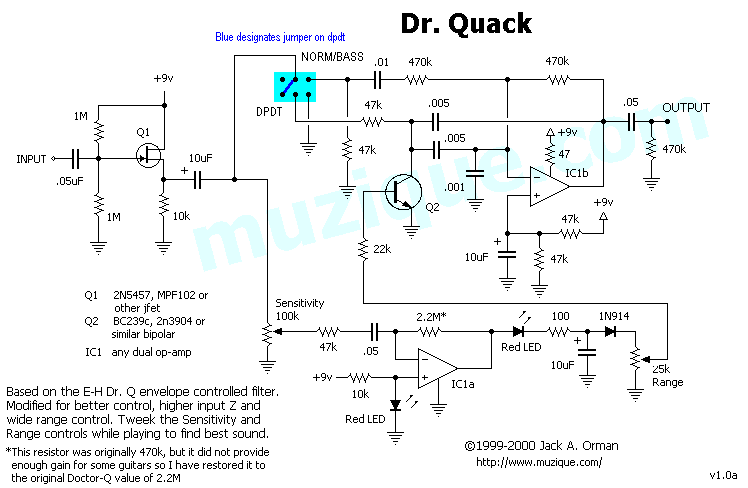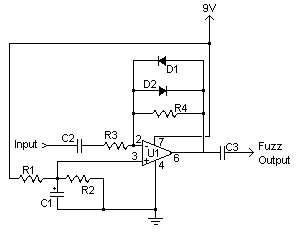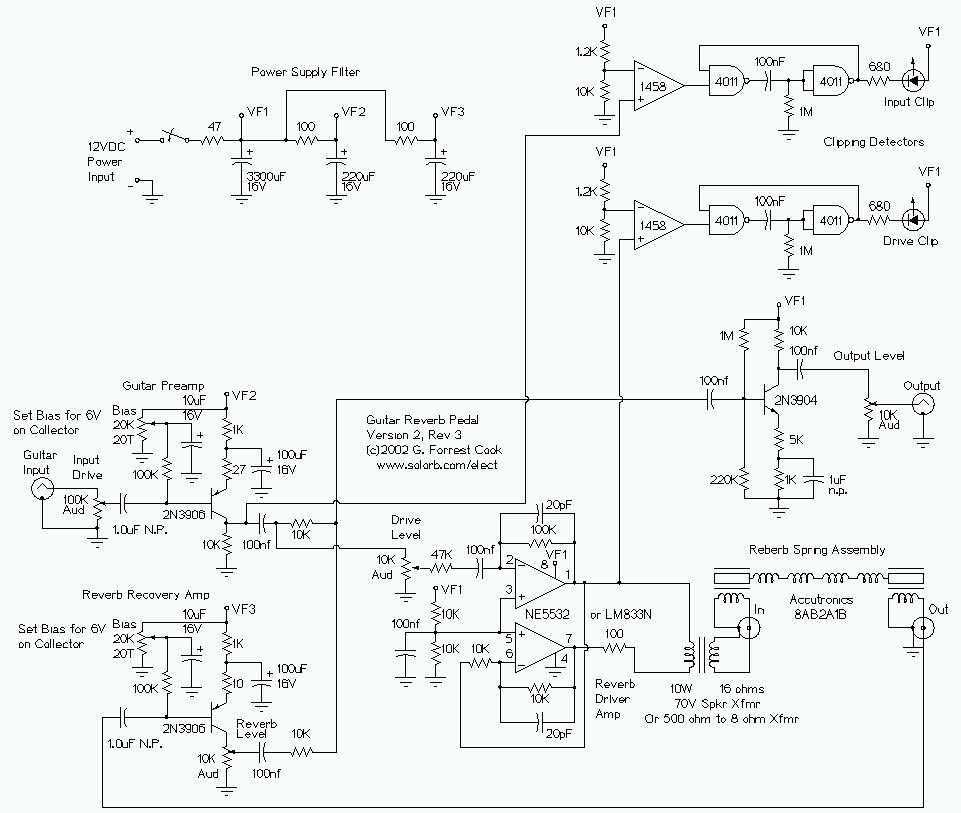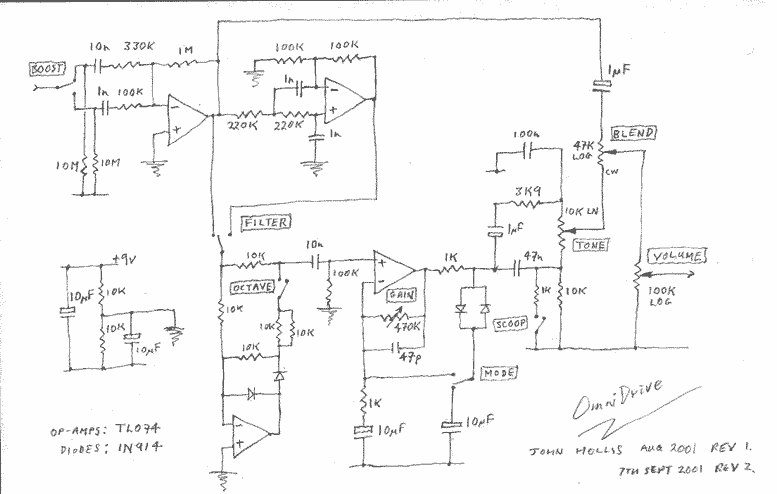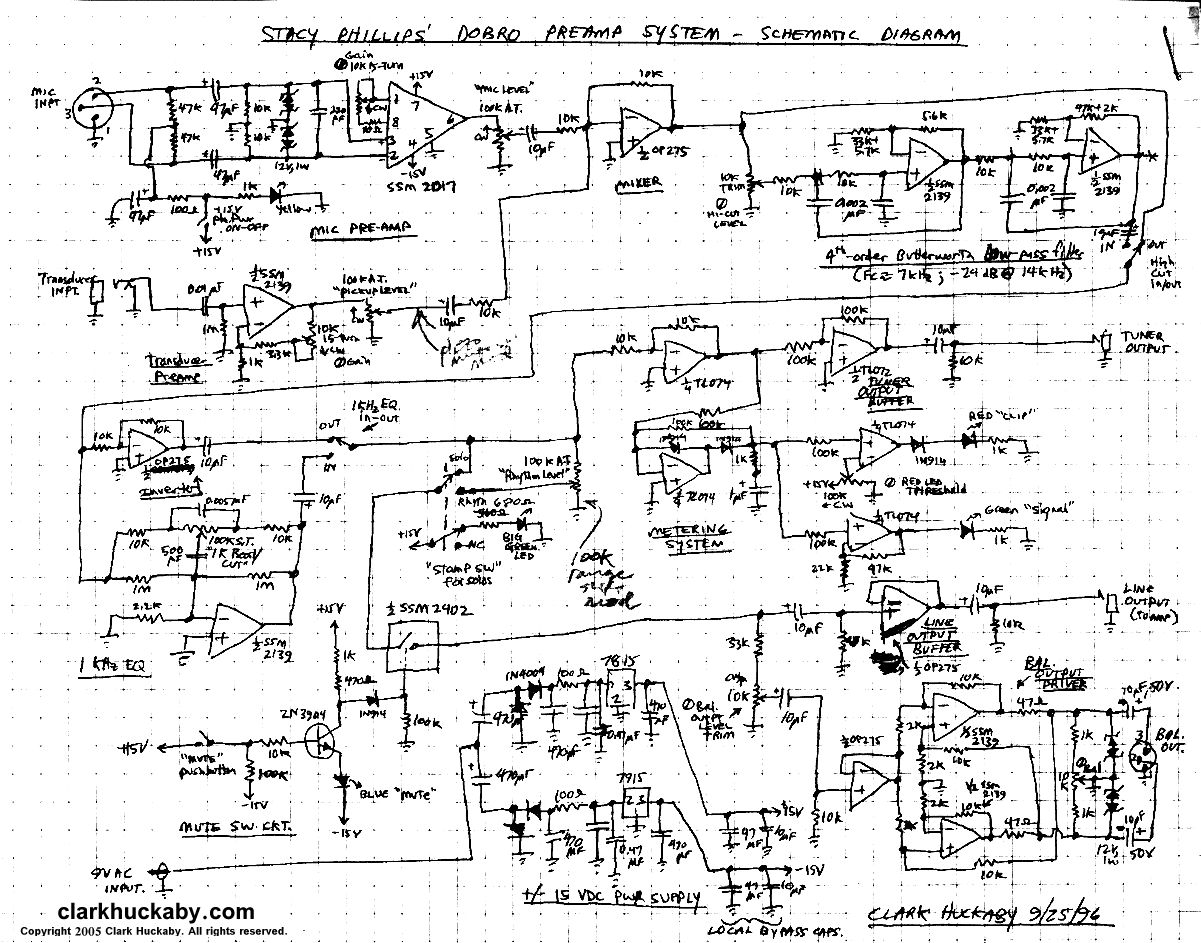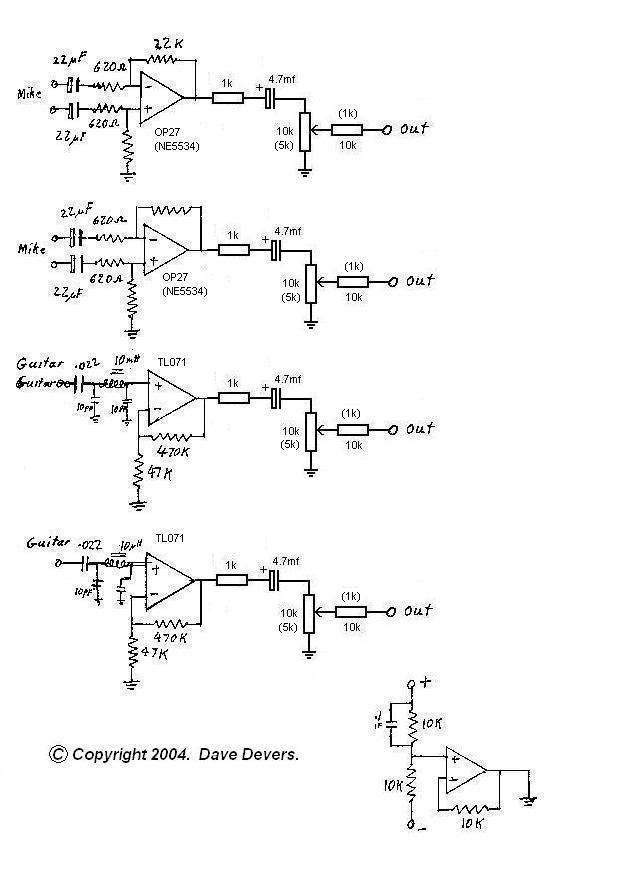
Guitar Reverb Pedal
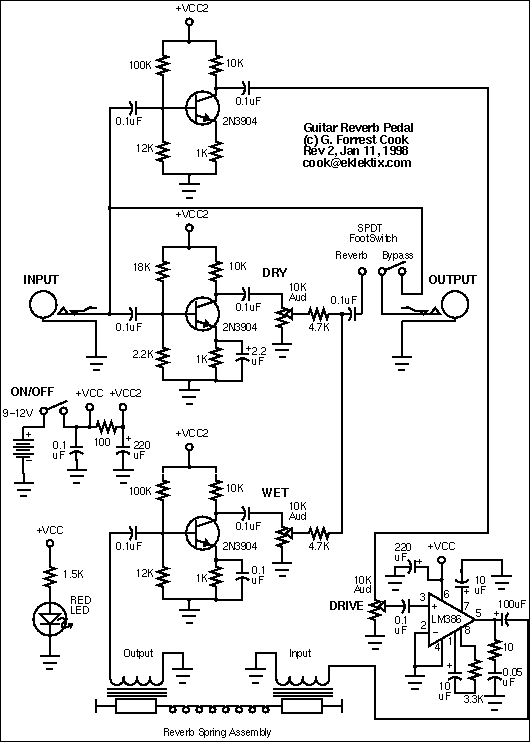
This is the second generation of a circuit for a guitar spring reverb pedal, it has dry, wet, and drive controls for a wide variety of sounds. With a decent reverb spring (tank) in overdrive, this circuit will produce an incredibly thick and grungy sound, build one and be the envy of all of your guitar playing friends. This thing is fun to play through. This circuit is here for historical purposes, it is recommended that you use the much improved
The guitar spring reverb pedal circuit described is designed to enhance the tonal capabilities of electric guitars by providing adjustable levels of dry and wet signals, as well as drive control for overdriven effects. The circuit typically includes a reverb tank, which is a mechanical device that creates reverb by using springs to produce sound reflections.
The dry control allows the user to mix the unprocessed guitar signal with the wet signal, which is the output from the reverb tank. This control is crucial for achieving the desired balance between the original sound and the reverberated sound. The wet control adjusts the intensity of the reverb effect, allowing for subtle ambiance or pronounced echo effects depending on the setting.
The drive control introduces overdrive into the signal path, which can significantly alter the character of the sound. When the reverb tank is driven hard, it can produce a thick, grungy texture that is particularly appealing for genres such as rock and blues. This overdriven sound can add warmth and depth to the guitar tone, making it more dynamic and engaging.
The circuit's design likely incorporates operational amplifiers (op-amps) for signal processing, along with passive components such as resistors and capacitors to shape the frequency response and control the gain. The inclusion of a footswitch allows for easy activation and deactivation of the effect during performance, providing musicians with flexibility in their sound.
For those interested in building this circuit, it is advisable to follow a well-documented schematic that outlines component values and connections. While this second-generation design serves as a historical reference, it may be beneficial to explore updated versions that incorporate modern components and design techniques for improved performance and reliability.This is the second generation of a circuit for a guitar spring reverb pedal, it has dry, wet, and drive controls for a wide variety of sounds. With a decent reverb spring (tank) in overdrive, this circuit will produce an incredibly thick and grungy sound, build one and be the envy of all of your guitar playing friends.
This thing is fun to play through. This circuit is here for historical purposes, it is recommended that you use the much improved 🔗 External reference
The guitar spring reverb pedal circuit described is designed to enhance the tonal capabilities of electric guitars by providing adjustable levels of dry and wet signals, as well as drive control for overdriven effects. The circuit typically includes a reverb tank, which is a mechanical device that creates reverb by using springs to produce sound reflections.
The dry control allows the user to mix the unprocessed guitar signal with the wet signal, which is the output from the reverb tank. This control is crucial for achieving the desired balance between the original sound and the reverberated sound. The wet control adjusts the intensity of the reverb effect, allowing for subtle ambiance or pronounced echo effects depending on the setting.
The drive control introduces overdrive into the signal path, which can significantly alter the character of the sound. When the reverb tank is driven hard, it can produce a thick, grungy texture that is particularly appealing for genres such as rock and blues. This overdriven sound can add warmth and depth to the guitar tone, making it more dynamic and engaging.
The circuit's design likely incorporates operational amplifiers (op-amps) for signal processing, along with passive components such as resistors and capacitors to shape the frequency response and control the gain. The inclusion of a footswitch allows for easy activation and deactivation of the effect during performance, providing musicians with flexibility in their sound.
For those interested in building this circuit, it is advisable to follow a well-documented schematic that outlines component values and connections. While this second-generation design serves as a historical reference, it may be beneficial to explore updated versions that incorporate modern components and design techniques for improved performance and reliability.This is the second generation of a circuit for a guitar spring reverb pedal, it has dry, wet, and drive controls for a wide variety of sounds. With a decent reverb spring (tank) in overdrive, this circuit will produce an incredibly thick and grungy sound, build one and be the envy of all of your guitar playing friends.
This thing is fun to play through. This circuit is here for historical purposes, it is recommended that you use the much improved 🔗 External reference
